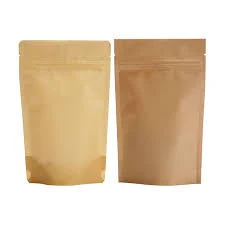pasta packaging
The Evolution and Importance of Pasta Packaging
Pasta, a staple food enjoyed by millions around the world, has a rich history that dates back centuries. As this beloved carbohydrate continues to gain popularity across various cultures, the importance of pasta packaging has evolved to meet the demands of consumers, enhance product preservation, and promote sustainability. This article explores the evolution of pasta packaging, its current trends, and its significance in the food industry.
Historical Context
Traditionally, pasta was made by hand, crafted from simple ingredients like flour and water, and then dried for preservation. Initially, pasta was sold in bulk or wrapped in plain paper, offering minimal protection. The packaging was functional but did little to appeal to consumers. However, as the industrial revolution ignited changes in food production, the need for more efficient packaging became apparent. The mass production of pasta in the late 19th and early 20th centuries necessitated innovations in packaging to ensure quality and prolong shelf life.
The Shift to Modern Packaging
As pasta production expanded, packaging transitioned from rudimentary methods to more sophisticated solutions. The introduction of glass, metal cans, and eventually plastic revolutionized how pasta was stored and sold. These materials provided better protection against environmental factors such as moisture, light, and air, which can all contribute to the degradation of food products.
Today, most pasta is packaged in plastic or cardboard boxes, which are designed not only to be functional but also visually appealing. Branding has become a critical element of pasta packaging, as companies strive to differentiate their products in a competitive market. Eye-catching designs, vibrant colors, and clear labels help attract consumers and convey essential information, such as cooking instructions and nutritional content.
Current Trends in Pasta Packaging
pasta packaging

In recent years, there has been a noticeable shift towards more sustainable packaging solutions in response to growing environmental concerns. Consumer awareness regarding plastic pollution has influenced food manufacturers to seek eco-friendly alternatives. This has prompted the exploration of biodegradable, compostable, and recyclable materials for pasta packaging.
Companies are increasingly investing in packaging innovations, such as using plant-based materials and reducing plastic usage. For example, some brands have introduced pasta packaged in bags made from renewable resources like corn or sugarcane. Additionally, many pasta manufacturers are embracing minimalistic packaging designs that utilize fewer materials while still ensuring product safety and integrity.
The Role of Packaging in Food Safety
The significance of pasta packaging extends beyond aesthetics and marketing. Packaging plays a vital role in ensuring food safety. Properly sealed packaging prevents contamination, preserves freshness, and extends shelf life. Vacuum-sealed bags and resealable pouches have become popular choices, allowing consumers to store their pasta safely and conveniently without compromising quality.
Moreover, smart packaging technology is on the rise, integrating tracking systems and freshness indicators that help consumers understand the product's condition. These innovations enhance food safety and provide consumers with valuable information about their purchases, fostering trust between the brand and the consumer.
Conclusion
The evolution of pasta packaging reflects broader trends in the food industry, driven by changes in consumer preferences, technological advancements, and environmental considerations. As pasta continues to be a beloved food across cultures, the importance of effective and sustainable packaging cannot be overstated. Companies that prioritize innovative design, safety, and sustainability in their pasta packaging are likely to stand out in an increasingly competitive market.
In conclusion, as we enjoy our favorite pasta dishes, it is essential to recognize the critical role that packaging plays in this culinary staple's journey from production to our plates. The ongoing evolution of pasta packaging showcases the industry's adaptability and responsiveness to consumer needs, ensuring that this beloved food remains a mainstay in kitchens around the world for generations to come. Through a blend of tradition and innovation, pasta packaging continues to evolve, serving as a bridge between the past and the future of food consumption.













